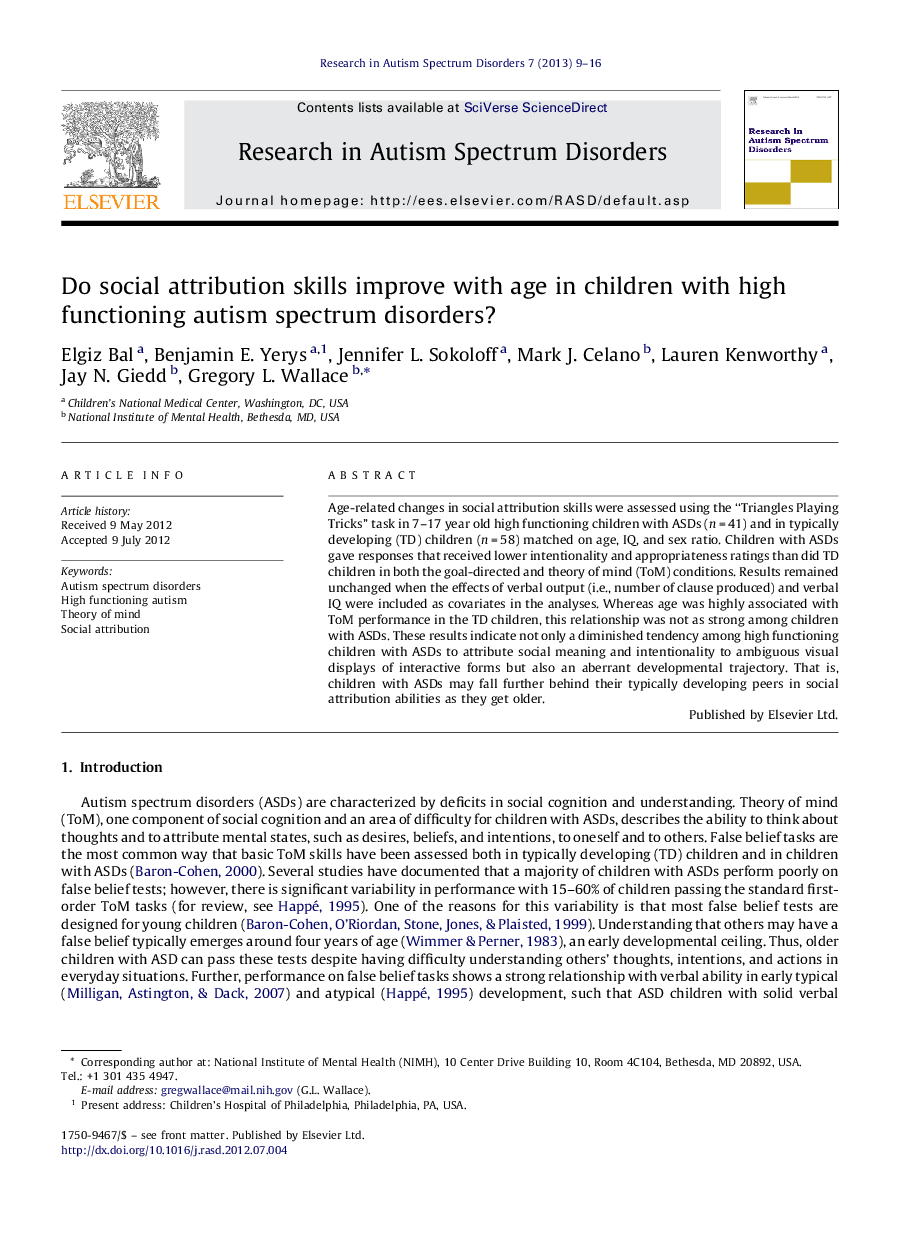| Article ID | Journal | Published Year | Pages | File Type |
|---|---|---|---|---|
| 370573 | Research in Autism Spectrum Disorders | 2013 | 8 Pages |
Age-related changes in social attribution skills were assessed using the “Triangles Playing Tricks” task in 7–17 year old high functioning children with ASDs (n = 41) and in typically developing (TD) children (n = 58) matched on age, IQ, and sex ratio. Children with ASDs gave responses that received lower intentionality and appropriateness ratings than did TD children in both the goal-directed and theory of mind (ToM) conditions. Results remained unchanged when the effects of verbal output (i.e., number of clause produced) and verbal IQ were included as covariates in the analyses. Whereas age was highly associated with ToM performance in the TD children, this relationship was not as strong among children with ASDs. These results indicate not only a diminished tendency among high functioning children with ASDs to attribute social meaning and intentionality to ambiguous visual displays of interactive forms but also an aberrant developmental trajectory. That is, children with ASDs may fall further behind their typically developing peers in social attribution abilities as they get older.
► Lower intentionality and appropriateness ratings were observed in the ASD group than the TD group. ► Children with ASDs had a diminished tendency to attribute social meaning and intentionality to ambiguous visual displays. ► Age was highly associated with ToM performance in the TD children, whereas this relationship was not as strong among children with ASDs. ► With increasing age, individuals with ASDs may fall further behind their TD peers in social attribution abilities.
